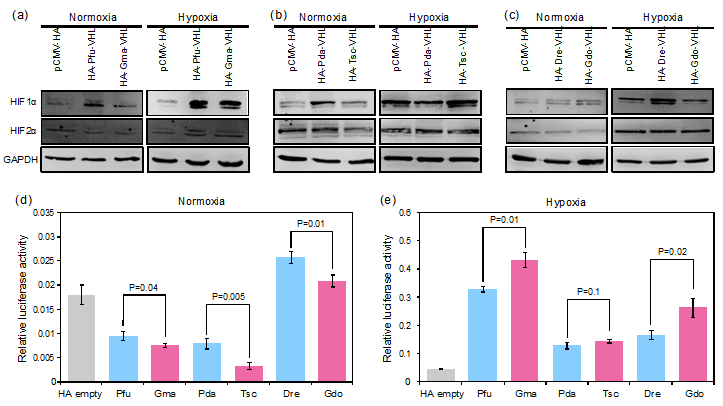
Newsroom
Widespread Convergent Evolution Happens in Fishes on Tibetan Plateau
Tibetan Plateau, the highest and largest plateau in the world, with an average elevation of 4,500 m above sea level, imposes many inhospitable living conditions on most organisms, including cold temperatures, low oxygen concentrations, and strong ultraviolet radiation. Nevertheless, several species have well adapted to these harsh living challenges. One such species is the endemic fish on the Tibetan Plateau which serves as a model to investigate the genetic mechanisms of convergent evolution in species from different lineages.
By integrating evidence from comparative genomics and functional assays, the research group led by Prof. HE Shunping from the Institute of Hydrobiology (IHB) of the Chinese Academy of Sciences investigated the genetic mechanisms of convergent adaptation in fishes on the Tibetan Plateau, and found that widespread convergent evolution happens in fishes on the Tibetan Plateau. The results were published in Molecular Ecology.
The researchers first identified more than 3,500 putative one-to-one orthologues between three fish lineages from the Tibetan Plateau and 12 fish species from low altitudes. By analyzing the nonsynonymous-synonymous (dN/dS) substitution ratio, they calculated the evolutionary rate of all these species. Their findings indicated that Tibetan fishes exhibited genome-wide accelerated evolution when compared to a control set of fishes from low altitudes.
Next, by identifying a total of 368 positively selected genes in Tibetan fishes, the researchers found that these genes are functionally enriched in energy metabolism and hypoxia response, both of which are associated with adaptation to the extreme environments on the Tibetan Plateau.
They further investigated parallel amino acid residue changes in the three lineages of Tibetan fishes, and discovered that parallel substitutions in the three Tibetan fishes significantly exceeded the numbers in any two Tibetan fishes plus one of control taxa.
Finally, the researchers detected convergent evolution in Tibetan fishes on the expression level by analyzing the expression pattern of von Hippel-Lindau (VHL) gene, which is key regulator of hypoxia adaptation. Results showed that, when compared to their paired low-altitude controls, VHL from Tibetan fishes bind and degrade hypoxia-inducible factor (HIF) more efficiently under normoxia, whereas overexpressing VHL from Tibetan fishes enhanced activity of the hypoxia response element (HRE) reporter under hypoxia.
In summary, these data provide genomic and functional evidence supporting convergent genetic mechanisms for high-altitude adaptation in fishes on the Tibetan Plateau.

Convergence at the expression level in Tibetan fishes (Credit: IHB)
(Editor: MA Yun)